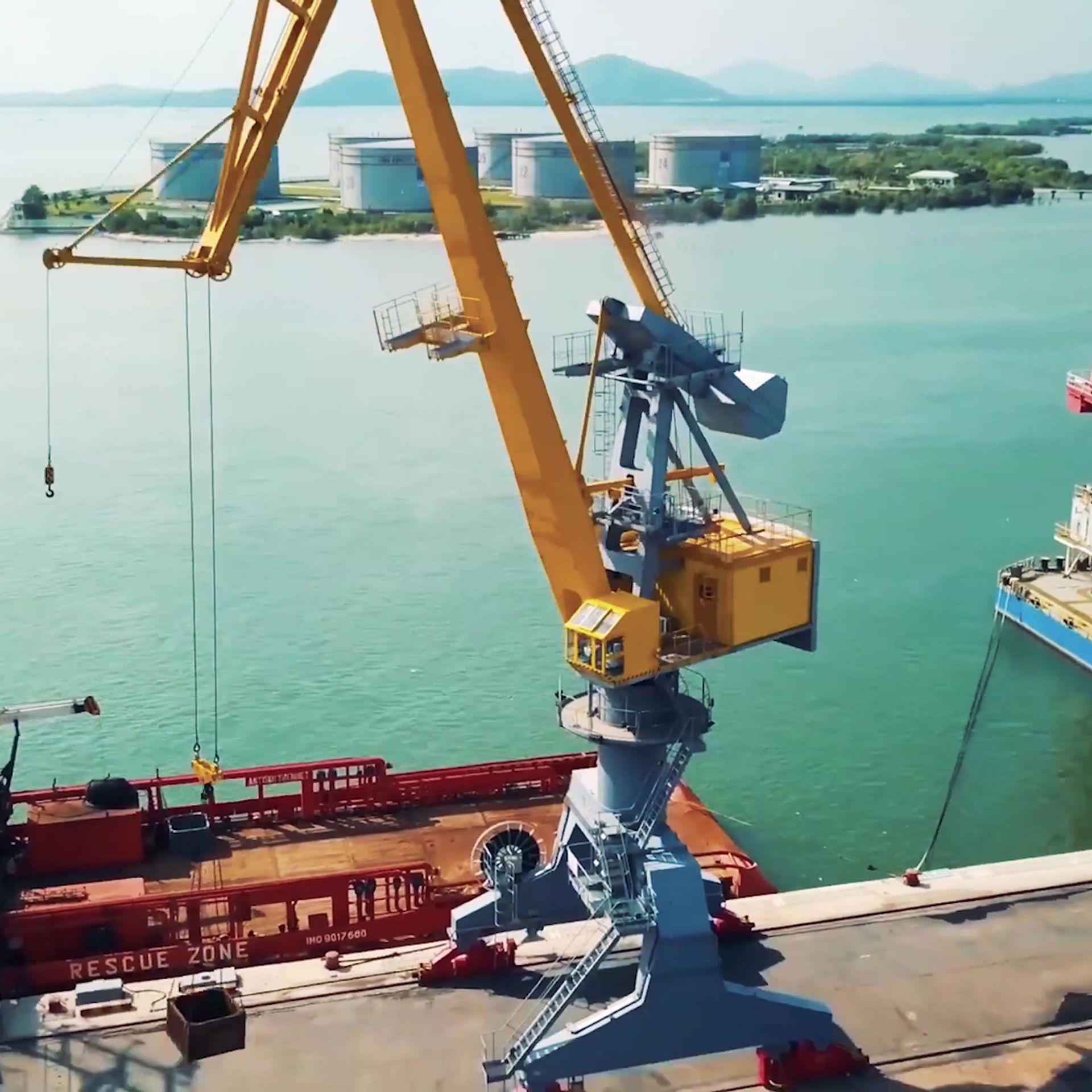
Language
Introduction Of Ship Cranes
Ship cranes, also known as ship cranes, cranes, are mainly installed on ships to load and unload various goods. They are the most important production operation deck machinery equipment on ships. They have the characteristics of compact structure, beautiful appearance, safety and reliability, energy saving and environmental protection, and good maneuverability. Its boom is divided into straight boom, telescopic boom, folding boom and other forms, and its power source control is divided into manual, electric, electro-hydraulic and other types.
Ship cranes are a special kind of cranes that perform transportation operations in the marine environment. They are mainly used for the transportation and transfer of goods between ships, sea replenishment, underwater operation equipment deployment and recovery and other important tasks. The special application environment on the sea brings great challenges to the control of ship cranes. On the one hand, similar to various underactuated cranes on land, it is necessary to control the swing generated during the load transportation process, ensure its positioning accuracy and transportation efficiency; on the other hand, because this kind of crane is fixed on a moving platform such as a ship, the platform itself The movement will have a strong impact on the load movement, and in many cases, the movement of the load lifting and landing points is inconsistent with the movement of the crane itself. Specifically, in the work process, the crane ship and the receiving ship will roll, pitch and heave with the waves, which will cause the load to swing; especially in the lifting process, this kind of movement of the ship will easily cause the lifted load to collide with the deck again, or make the load that has been put down but not yet released from the hook to hang again, which will threaten the safety of the operation. Especially when carrying out ammunition replenishment between ships, this kind of coupled movement may cause very serious consequences.
The control of ship cranes has received widespread attention from military and civilian marine engineering in various countries, and the research on the control of such nonlinear and strongly coupled underactuated systems under special disturbances also has important theoretical value and general significance. The control of ship cranes is mainly divided into two aspects: vertical control to reduce the impact of ship motion and horizontal anti-swing to suppress load swing. For vertical control, the common method is to connect the receiving ship through the mechanical structure on the crane ship, and sense its relative movement, so that the length of the sling changes synchronously with the heave movement of the receiving ship, thereby compensating for the relative movement of the two ships, and completing the load on this basis. Lifting and transportation. This method has special requirements for the mechanical structure of the crane, and also has greater limitations on the lifting quality.
